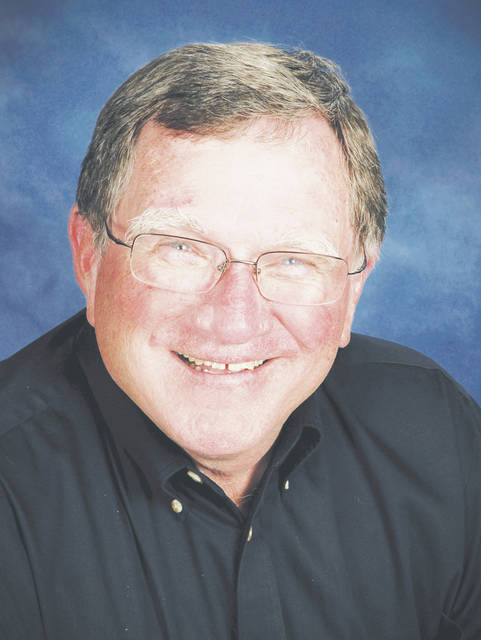
In the mid-80s we were heading to Stella Maris Inn, a diving resort in the southern part of the Bahama islands.
After driving to Florida, we flew from Fort Lauderdale to the international airport in Nassau. From there we were scheduled to change from a well-known American airline to a small, air-carrier known as Bahamasair.
Bahamasair was the national airlines for all of the Bahama Islands. Since they specialized in island-hopping flights, I didn’t expect our next flight to be in a large airplane.
I’ve never been afraid of flying, but I had heard some questionable things about Bahamasair. People who were familiar with their operation jokingly told me that their motto should be, “Time to Spare? Fly Bahamasair.”
Most airlines seem to work diligently to keep on schedule. Bahamasair seemed to use a different clock.
Most people call it “Bahama-Time.” If you’re in the Bahamas and someone tells you to be somewhere at a specific time, if you’re on Bahama-Time, it’s OK to be within an hour or two of that time.
On this specific flight, we landed in Nassau and walked into the airport to the sweet island sounds of Calypso music. Like most airlines, there seemed to be a lot of hurry-up-and-wait, hurry-up-and-wait going on. Finally, our tickets were confirmed and we were hustled into a little, hot, humid room to await boarding.
The time (in Bahama-Time) finally came. We picked up our suitcases and slung our dive-bags over our shoulders and proceeded in single-file out to the tarmac.
Little planes were scattered all around the hot asphalt. Some looked like corporate jets. Many of them seemed to be too small for our group. We walked past several planes. Then I realized that we were headed for a beat-up looking plane that could have been used in one of the old Indiana Jones movies.
There on the tarmac sat the aircraft that would carry us on the final leg of our journey. It was a Douglas DC-3. The commissioning plate that was attached to a wall inside the aircraft showed that our plane was built in 1946. We were about to fly a few hundred miles over the open Caribbean Sea in an aircraft that was built just as World War II was ending.
If a car is 20 years old, it is considered an antique. We were climbing into an airplane that was double that age.
“Climbing into the plane” was an appropriate term. The door opened outward and down. The few steps needed to enter the plane were built into the inside of the door. While resting on the tarmac, the plane angled upward at a considerable incline. Once inside the body of the plane, it was like walking uphill. You needed to use the seat-backs to help pull yourself along.
The captain was already in the cockpit. Normally, you might expect to hear the captain talking with the air-traffic control tower, but I’m sure our captain couldn’t hear anything over the reggae music that was blaring from his boom-box. The one flight attendant was dancing her way between the seats and passengers trying to get everyone settled.
Through the window, I could see some ground crew members attempting to pump aviation fuel into the plane. “Attempting” is the correct word. After a few minutes, one of them walked up to the pilot’s open window and started yelling something. The pilot yelled back. The reggae music drowned out all conversation.
The pilot called the flight attendant up to the cockpit and said something to her. She exited the plane and joined the ground crew members in trying to get the fueling system working. Soon, she was pulling on a starter rope that looked like something that was attached to my lawnmower.
She finally got it started and came back inside. We gave her a round of applause.
As we taxied into position on the runway, none of us were filled with a great deal of confidence, but our crew members were the professionals.
I chose to trust the professionals. They knew the plane. They had done this hundreds of times before. I decided to trust them, so I sat back to enjoy the flight. Once they got the fuel in the plane, everything else worked extremely well.
For some reason, many people no longer trust professionals. If your physician tells you something, you can always get a second-opinion. But, many people, instead of going to another medical professional, they will go the internet. WebMD is not a professional second opinion.
Despite what is said about the “fake-news,” journalists are professionals. They work diligently to find the truth and relay that information to the public.
Obviously, many journalists will present the news from their own viewpoint. You can tell the political positions of many newscasters by the way their stories are presented – some are ultra conservative; some are far left.
I miss the good old days of Walter Cronkite. I had no idea whether Walter was a Democrat of a Republican. He simply reported the news as it happened. Using that unique voice and reporting style, he earned the title, “The Most Trusted Man in America.”
There was a time in America when you could always trust a professional.
Now, many professionals are barely able to get their pump started.
Randy Riley is former Mayor of Wilmington and former Clinton County Commissioner.


